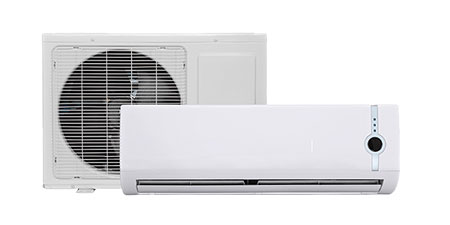
Air Conditioning
Air Conditioning
You may be wondering whether air conditioning is worth it for a garden room. While aircon has yet to become common in UK homes, it’s soaring in popularity with garden room buyers. In fact, many suppliers have told us that it’s one of the most common upgrades.
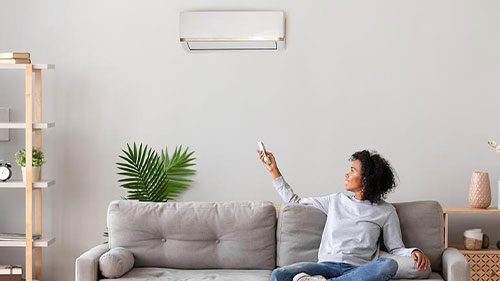
Why air condition a garden room?
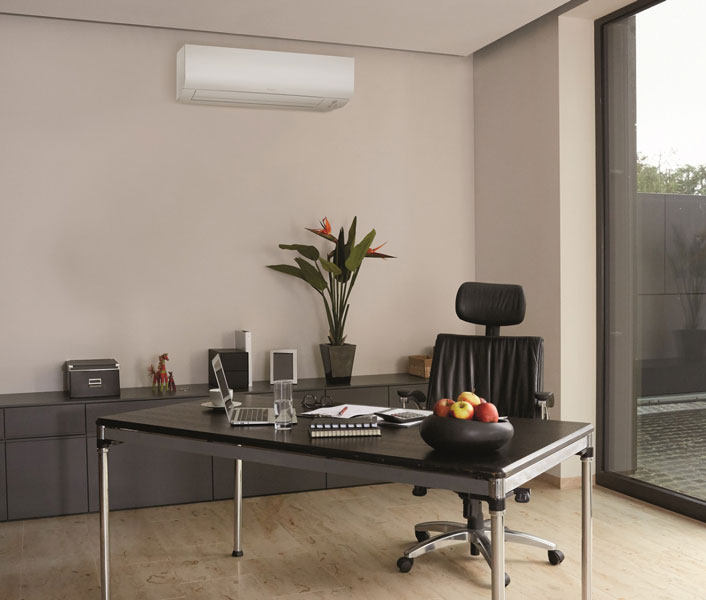
A garden room is usually built to similar standards as a modern home. Thick, high-quality insulation helps keep the room at a comfortable temperature and prevent overheating. Still, when many British summers lately seem to come with heat warnings, you may want to think about cooling.
Heat pump air conditioning is the most effective way to cool a garden room. Aircon actually lowers the room’s temperature, whereas alternatives like a fan simply move air around. Less known, it’s also a surprisingly economical heating option as well.
For those of us choosing to work from a garden office, air conditioning offers the simplest way to maintain a comfortable temperature throughout the seasons.
Do all air conditioning units heat as well as cool?

Not all air conditioning units offer a heat option; those that do are often known as “heat pump air conditioners”. Air conditioning works by transferring the heat energy inside a room to the outdoors using the refrigeration cycle. When air conditioners need to heat a room, they run that same cycle in reverse.
Air conditioning can be an expensive upgrade. If you’re going to invest in an AC system for a garden room, we’d recommend opting for one that’s capable of heating too. After all, you’re going to need heating anyway, and the running costs are lower than most other forms of heating.
How to choose the right size for your garden room air conditioning
To cool (and heat) your garden room effectively, you need to make sure you choose the right size of air conditioner for the space. Fortunately, the small size of most garden rooms makes buying an underpowered unit quite difficult. The factors that determine the capacity of AC you need are:
- Room size – total volume so height, width, and depth
- Insulation
- Sun exposure – particularly troublesome if you have lots of glass
- Climate
- People – how many people use the room
- Devices that output heat – computers, etc

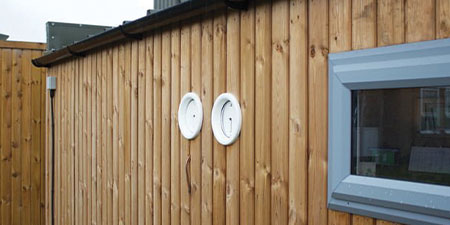
Air conditioning sizes are measured in British Thermal Units (BTU). Occasionally you’ll see capacities quoted in kilowatts (kW), so it’s worth knowing that 1kW is equivalent to 3,412 BTU.
You can very roughly calculate the room’s BTU requirements by multiplying the square footage by 25. That particular formula is based on standard UK ceiling heights (8ft / 2.4m), while most garden rooms have lower ceilings (~2.1m – 2.2m). There are calculators which can offer a more accurate estimate.
A 4m x 3m garden office is likely to need an air conditioner with a capacity of at least 5,500 BTU. The smallest air conditioners tend to be 7,000 BTU / 2kW, which is more than adequate for our example room.
Why an oversized AC is a problem
If the unit you buy is undersized, it’ll always be at maximum capacity and won’t be capable of cooling the room properly. If you go too far in the opposite direction and opt for an oversized AC unit, you’ll meet another problem.
In addition to cooling, air conditioners remove moisture from the air. They’ll work to keep the relative humidity level of the room between a comfortable 30% to 50%.
Air conditioners cycle on and off to keep the room at the target temperature. An oversized unit will cool the room down quickly, but it’ll stop and start much more frequently. That not only puts more stress on the unit, but it also means the dehumidifier won’t operate as efficiently.
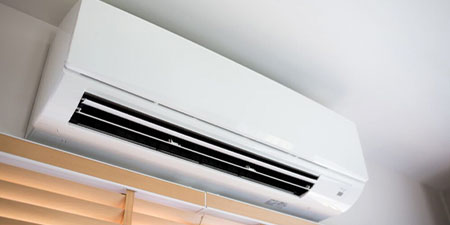
Is it expensive to run an air conditioner in a garden office?
Air conditioning has quite the reputation for racking up bills over the summer. How much of that is warranted, though? This section will look at how much it really costs to air condition a garden room or office.
Firstly, we need to distinguish between cooling capacity and electricity consumption. If an air conditioner is quoted as being 2kW / 7,000 BTU, that’s purely referring to the unit’s cooling capacity. It doesn’t mean that it’s going to consume 2kW of electricity while it’s running. Power consumption will vary from unit to unit but can often be in the region of 0.5kW.
As an example, we’ve highlighted some relevant specs for the Panasonic KIT-TZ20-WKE (7,000 BTU):
- Cooling capacity – 2kW (0.75kW – 2.40kW)
- Input power cooling – 0.49kW (0.18kW – 0.60kW)
- Heating capacity – 2.7kW (0.70kW – 3.60kW)
- Input power heating – 0.65kW (0.17kW – 1.02kW)
Values are nominal (min – max). Source: https://www.aircon.panasonic.eu/GB_en/product/tz-super-compact-r32/
Official figures, published by the Department for Business, Energy & Industrial Strategy, reveal that the average price of electricity in the UK was 18.9p/kWh in 2021. Using the example specs, in combination with the latest energy cost figures, allows us to create a rough estimate of running costs.
It would cost on average 9.261p per hour to cool our illustrative garden room with air conditioning. That means we’d be paying 74.088p per day (8 hours) or £3.71 per week (5 days / 40h).
Heating would vary between 3.213p and 19.278p per hour, with the nominal amount being 12.285p per hour.
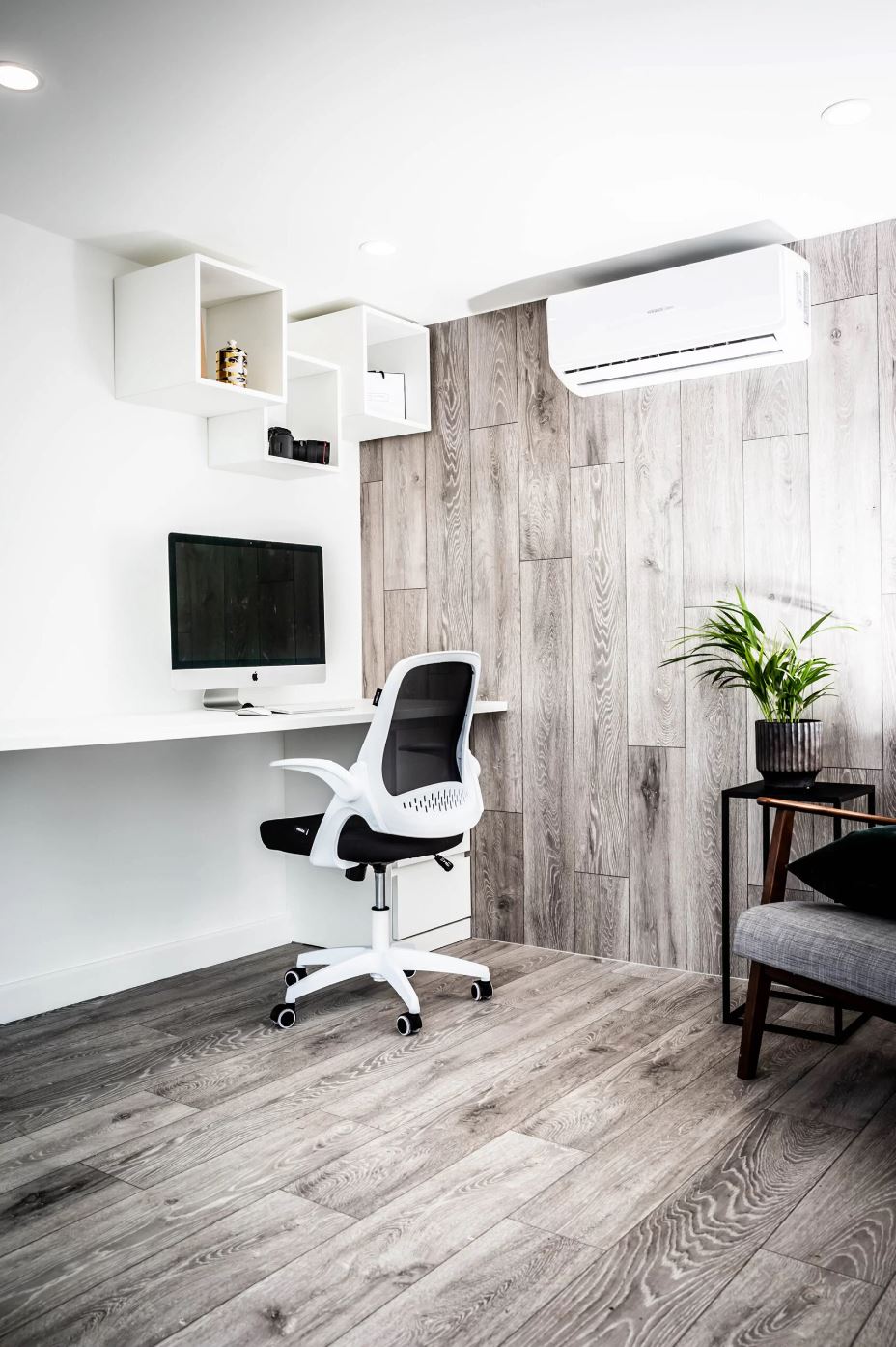
Air Conditioning System Types
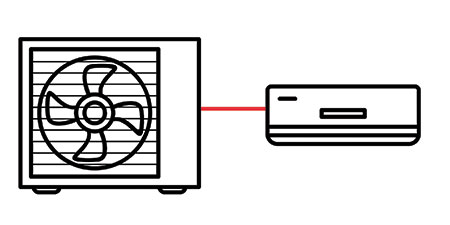
Split System
Basic air conditioning split systems consist of one outdoor unit known as the condenser, and one indoor unit know as the evaporator. These are connected via refrigerant pipes and interconnecting cables.
All systems we install incorporate heat pump technology, providing highly efficient cooling and heating capabilities.
Multi-Split System
Multi-split air conditioning systems are a type of split system air conditioning.
While a standard split system is designed for temperature control of one room, multi-split systems can maintain the temperature in multiple rooms.
The system is made up of one outdoor unit and several indoor units which can vary in specification to meet the requirements of the indoor space.
Each indoor unit requires its own individual refrigerant pipework and interconnecting cables connecting to the outdoor unit.
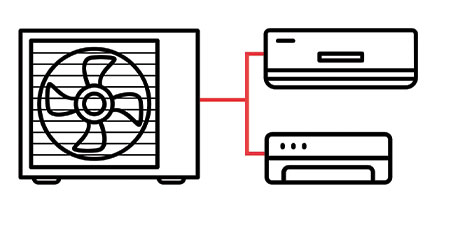
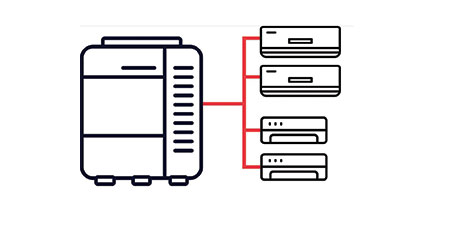
VRV / VRF
VRV (Variable Refrigerant Volume) and VRF (Variable Refrigerant Flow) air conditioning systems are made up of multiple indoor units running from a central outdoor unit, with the difference between the two being dependant on manufacturing methods.
Incorporating both heat pump and heat recovery technologies creates exceptional efficiency, making these systems able to simultaneously heat and cool as required.
With the ability to connect up to 50 indoor units per outdoor and the linking outdoor units together, installation capabilities are almost limitless. This makes VRV/VRF systems an ideal solution to temperature control within the commercial environment. While the initial cost will be higher on this installation, increased efficiencies will provide cost-savings over time.
Types of air conditioning used in garden rooms
Wall Split Air Conditioning
Wall-split air conditioning is the traditional system most people tend to think of first. It’s known as a split system because two units, one indoors and one outdoors, are connected by a copper pipe. It’s both the most efficient and quietest approach to AC. If you’re going to be spending a lot of time in your garden room, this is generally the system you’ll want to go for. It is, however, the most expensive.
Pros
- Most efficient type of AC – they’re the cheapest to run
- Typically quieter than other options – the condenser unit is located on the outside of the building
- Saves space – the indoor unit is mounted high on the wall and the space beneath remains usable
Cons
- Expensive to install – must be fitted by an F Gas certified engineer

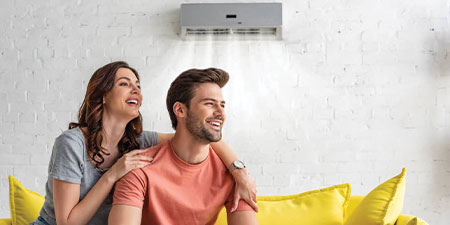
Portable Air Conditioners
More popular in UK homes, portable air conditioners are the most affordable way to get AC into a garden room. Expect to pay anywhere from £200 to £450 for a good quality portable air conditioning unit.
It’s important to stress that evaporative coolers are not air conditioning. Some retailers will lump them into the same category, which we feel is misleading. Air conditioning needs to exhaust hot air outside the room; if a portable air conditioner doesn’t have a vent pipe leading to the outdoors, it’s more than likely misrepresented.
The ability to share a portable AC with the main house makes them an excellent choice for garden rooms that don’t get as much use. Note that vent hoses are often 1.5m which limits positioning. They’ll need to be close to a window or dedicated vent hole.
Pros
- Relatively low cost
- Can be shared with main property and relocated with ease
- No installation required
Cons
- Less efficient than other types of air conditioner
- Can be quite noisy
- Takes up floor space and difficult to position well
All-in-one / Condenser-less Air Conditioning
A fairly new entrant to the market, monoblock air conditioning is permanently wall-mounted but doesn’t require professional installation.
They’re sometimes referred to as “condenser-less” air conditioning since there’s no outdoor unit. Despite their name, they do have a condenser, it’s just built into the indoor unit instead. Unlike a portable air conditioner which also uses an indoor compressor, monoblock units have both an intake and an outlet hole. By drawing in outdoor air for the compressor, air pressure within the room remains constant which helps with efficiency.
Expect to pay between £750 and £1,500 for a wall-mounted all in one air conditioner. Although the unit cost is higher than traditional wall-split AC, monoblocks don’t require professional installation.
Pros
- Often cheaper than a wall-split unit once installed
- Easy to install
- More efficient than portable AC
Cons
- Less efficient than a wall-split unit
- Can be quite noisy
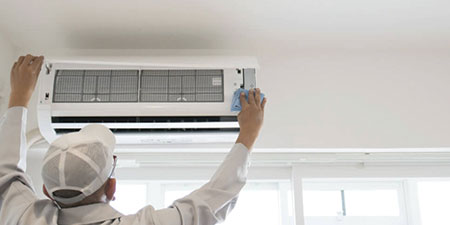
How much does it cost to install air conditioning in a garden room?
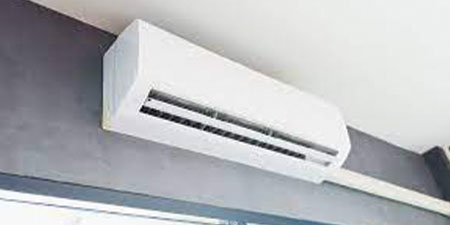
The cost of installing air conditioning in a garden room is easier to estimate than it would be for a house since many of the factors that impact cost are known. For the majority of garden rooms, a small (2 kW / 7000 BTU) unit will more than suffice, it’s on the ground floor, and you’ll be able to go straight through an external wall.
Many garden room suppliers will offer air conditioning as an option for between £1,000 and £1,800. If you’re considering having aircon fitted separately, you should expect to pay anywhere from £900 to £1,500 for a professional installation.
Can I install air conditioning myself?
To install a wall split air conditioning system in a garden room, you must be qualified to work with F gas. A certified F Gas Engineer should always carry out installation, and responsible retailers will collect the details of your chosen installer before agreeing on delivery.
An all-in-one monoblock air conditioning unit is relatively DIY friendly. It’s pre-gassed meaning you don’t need an F Gas Engineer to install it. You’ll need to be confident enough to cut two large-diameter vent holes through your garden room wall and to mount it safely on the wall. Monoblock units typically come with a standard UK plug, although you can hardwire them if required.
